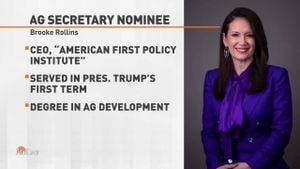Negotiations between China and the European Union (EU) over new tariffs on electric vehicles (EVs) have recently reached what some analysts describe as a promising turning point. Both sides are reportedly moving closer to agreeing on solutions to avoid increasing trade tensions and to nurture their burgeoning EV markets.
The background to these discussions speaks to rising concerns from the EU, who has been increasingly wary of what it perceives as China’s unfair advantages within the EV sector. Allegations of subsidized pricing for Chinese-made vehicles have cast shadows over bilateral relations. Following these tensions, the EU implemented its own probe, eventually announcing additional tariffs ranging from 10% to as high as 35.3% on imports of Chinese electric vehicles. This decision was made on October 29 and is set to be imposed for the next five years, putting pressure on Chinese manufacturers and the EU’s EV market.
Yet, as frustration simmered, particularly with some EU member states opposing these tariffs, talks continued. Bernd Lange, the chair of the EU Parliament’s Committee on International Trade, shed light on the negotiations during recent interviews. He hinted at potential movement forward, expressing hope for the EU and China finding common ground, which may include minimum pricing commitments from China on vehicle exports to Europe. "We are close to reaching a deal," Lange told n-tv, though specifics of the arrangement have yet to be detailed.
Further discussions were initiated between technical teams from both parties, aiming to establish terms under which tariffs could be lifted. These dialogues took place both face-to-face and via video conferencing from November 2 to 7. According to sources familiar with the negotiations, both parties seem to have come to what they describe as a "technical consensus." This could involve China committing to regulate EV prices to align with European expectations, facilitating the withdrawal of heightened tariffs.
This tangled web of talks reflects not just the economic stakes, but also the broader demands of protecting local markets. Given the EU's growing fear of being overwhelmed by low-cost Chinese competition, many stakeholders urge rational reflection on both sides. Sang Baichuan, dean at the University of International Business and Economics, noted, "Simply suppressing supply from China isn’t the solution. European companies need to assess their competition and potential for collaboration with Chinese firms."">
The core of the narrative remains the complex interplay of economic interests and global market strategies. Despite tariffs being imposed, trade officials from both sides have engaged earnestly, with the Chinese government reportedly reassessing its approach to some EU imports. For example, as part of its broader trade relations, China announced temporary anti-dumping measures on selected imports of EU brandy and toyed with the idea of imposing increased tariffs on EU cars, particularly those using large-displacement engines.
The impact of these negotiations doesn’t just lie within the tariff rates, but extends to the essence of how both economies view electric vehicles moving forward. With more than 85% of global battery cell production capacity now controlled by China, many argue the need for the EU to invest heavily in its own competitive capacities if it hopes to sustain its automotive industry. Viable feedback loops between competition and collaboration can lead to favorable outcomes.
Cui Hongjian, director at Beijing Foreign Studies University's Center for EU and Regional Development Studies, emphasized the strategic prudence required from the EU. "Given the economic challenges facing Europe, it makes sense to seek agreements rather than escalate tensions. A form of consensus can provide relief for all involved parties." The very fabric of the EU-China relationship hinges on the outcome of these negotiations, conceivably setting the tone for future collaborations or conflicts within the electric vehicle sector.
Overall, the EU and China are standing at a pivotal crossroads as discussions continue. Both parties have expressed their desire to find solutions grounded not just on financial regulations, but also on mutual respect and acknowledgment of each other’s market dynamics.



